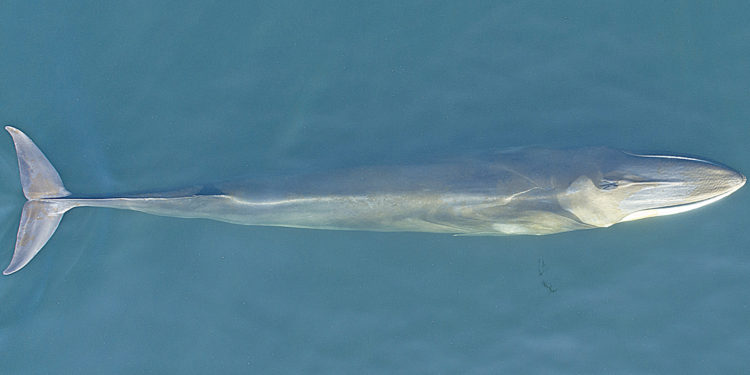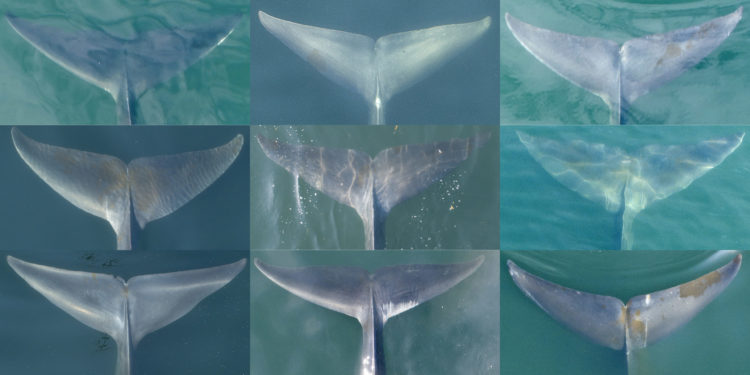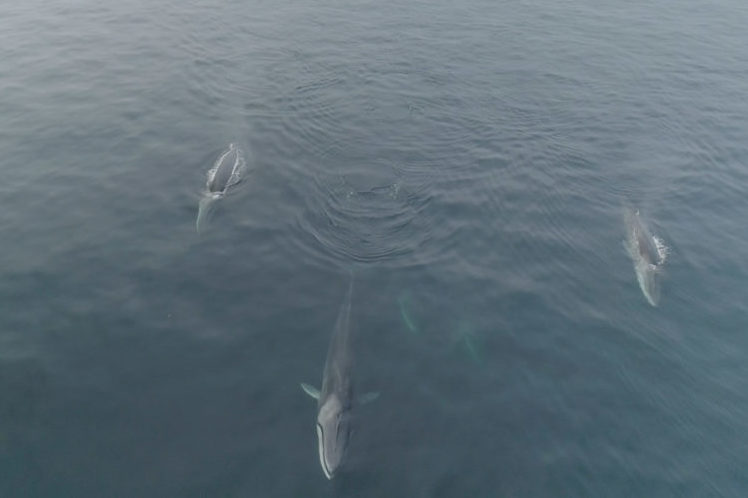Whales at greater risk from fishing than previously believed

A larger proportion of whales than previously thought is being injured by fishing equipment, according to new research led by the University of St Andrews.
The research, published in Endangered Species Research, showed that the vast majority of the whale populations in the Gulf of St Lawrence have shown previous entanglement in fishing gear.
The team used drones to search for scars on the whales which showed entanglement injuries.
In right and humpback whales, between 60 per cent and 80 per cent of the mammals have been entangled at least once in their lifetime. For the larger rorqual whales, like blue and fin, it had been previously assumed that this number was only around ten per cent because they are stronger and might live more offshore, thus less overlapping with fishing. However, the new findings showed that this was in fact a problem of perception rather than reality.
One of the main areas where entanglement scars are found on whales is the tail and the tailstock (peduncle) in front of the tail/fluke.

Right and humpback whales lift their tail every time they dive, so they expose this body area, making it easy to identify entanglement scars. Fin whales and blue whales do not lift their tail, making it impossible to determine if an animal exhibits scars around the tail/tailstock as seen from a vessel.
However, using drones the researchers were able to look at the body areas which remain under the water’s surface.
Using drones, the team observed that at least 55 per cent of the fin whales also exhibited scars from entanglement, and the range for the blue whales is similarly high at 40 to 60 per cent.
Dr Christian Ramp, Honorary Research Fellow in the School of Biology at the University of St Andrews, said: “A simple change of perspective from a vessel’s side to the bird-view of a drone revealed the fact large whales like blue and fin whales are also heavily affected by fishing activities.
“We proved that the previous assumption that interactions between fishers and whales are rare was wrong and showed that a large portion of the two populations has been previously entangled.

“This finding will likely profoundly impact the recovery plan/strategies here in North America, including legislation. It will hopefully trigger studies on this species in other regions.
“These results will require a review of every recovery plan and strategy in which, so far, fishing was not listed as a significant threat for these two species.”
Entanglement in fishing gear is one of the biggest threats to whales, however, it is unusual for such events to be witnessed: fewer than one in 15 entanglements are seen.
The paper, ‘Up in the air: drone images reveal underestimation of entanglement rates in large rorqual whales’ by Christian Ramp, David Gaspard, Katherine Gavrilchuk, Miranda Unger, Anna Schleimer, Julien Delarue, Scott Landry and Richard Sears is published in Endangered Species Research and available online.
Please ensure that the paper’s DOI [doi.org/10.3354/esr01084] is included in all online stories and social media posts and that Endangered Species Research is credited as the source.